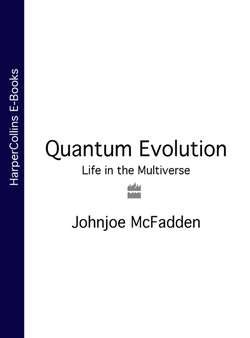Читать книгу Quantum Evolution: Life in the Multiverse - Johnjoe McFadden - Страница 16
LIFE WITHOUT WATER?
ОглавлениеWe have already encountered some of Earth’s driest places, since they are also the hottest (deserts) and coldest (Antarctic Dry Valleys). As we have seen, many organisms, such as lichen, manage to survive drought conditions, but do so in a dormant state awaiting the return of moisture from melting ice, rain, fog or dew. The key to long-term survival appears to be a carefully controlled desiccation – removal of water under conditions avoiding damaging the cell. A commonly used technique for long-term storage of microbes and plant seeds is freeze-drying, in which water is evaporated whilst the cells remain frozen to minimize cell damage. Plants use a similar strategy to make drought-resistant seeds. The seeds undergo a process of controlled desiccation, in which water is replaced by a sugary liquid hardening to vitrify the seed.
Animals and vegetative plants do not tolerate drought. There are however a few plants, known as resurrection plants, which can survive conditions that reduce their moisture content to less than ten per cent. The palm-like fern, Actiniopteris semiflabellata, adorns exposed rock faces throughout East Africa. In times of drought, the plant dries to a crisp brownish-grey discolouration on the rocks; yet, when the next rains arrive, the dehydrated leaves absorb the water, resuming growth. Resurrection plants use a variety of mechanisms to resist the damaging effects of drought. Water is sometimes replaced by sucrose, which encases their cells in a glassy fluid. In other plants, a group of proteins, called dehydrins, appear to protect delicate cellular structures during desiccation.
Survival is, however, not active life. Seeds and drought-resistant plants are never active. Although, paradoxically, removal of water appears to be essential for long-term survival of dormant forms, it remains essential for active life.
